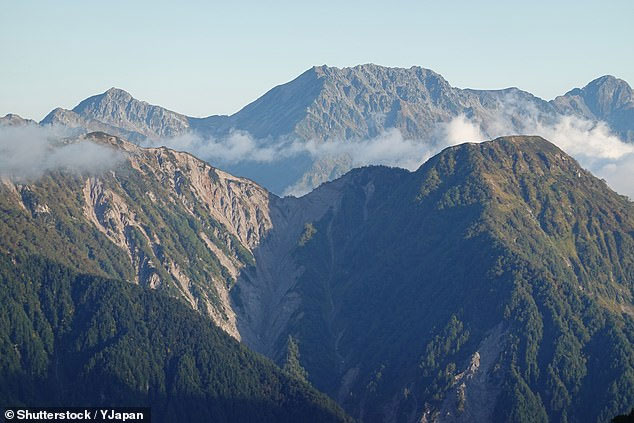Climate change could create more 'sky rivers' in East Asia
According to the Daily Mail (UK), scientists at the University of Tsukuba (Japan) have created a model to study the behavior of atmospheric rivers and extreme rainfall in East Asia, based on data Meteorological data collected from 1951 to 2010 and projections for 2090. The team found that if the temperature increases by 4 degrees Celsius, in the worst case, atmospheric rivers will appear increasingly more, leading to unprecedented record rainfall across the region.

According to forecasts, the southwestern slopes of the Alps will record record rainfall in the near future.
According to the simulation, atmospheric rivers will occur on the southern and western slopes of East Asia, causing rainfall, said Professor Yoichi Kamae, an environmental scientist at the University of Tsukuba, and the study's author. records in regions including Japan, Korea, Taiwan and northeastern China. The southwestern slopes of the Japanese Alps are the area that will see the heaviest rainfall.
'Global warming is becoming more and more obvious and it's not just global warming. As the name suggests, atmospheric rivers are long, narrow bands of water vapor that flow through the atmosphere. When one of these bands encounters a barrier, such as a mountain range, it can produce tremendous amounts of rain or snowfall," the scientists explained.
Extreme events, such as heavy rains, floods and heat waves, are becoming more frequent and more intense around the world. This creates an urgent need for forecasting and preparing future scenarios, the researchers warn.
East Asian countries have suffered greatly from extreme weather events that have caused severe damage over the past decade. This area has seen extremely heavy rains in July 2018 and July 2020. Some countries have had to pay a heavy social cost, including human life. Therefore, the team believes that predicting rainfall in this region, as the climate continues to change, is extremely important.
While only analyzing data for East Asia, the team says their predictions can also be applied to mid-latitude regions, with steep mountain ranges, including Europe and North America. Creating simulations based on different climate change outcomes allows scientists to predict the effects of different weather phenomena as the Earth warms.
'Our findings can also be applied to other regions in mid-latitudes where atmospheric river interactions and steep mountains play a major role in influencing precipitation, such as in western North America. and Europe. These areas may also experience more frequent and more intense extreme rainfall events as the climate warms,' Professor Kamae said.
The new findings have been published in the journal Geophysical Research Letters.
- Asia suffers severe climate change
- Announcing a map of climate change impacts in Southeast Asia
- Floods, droughts will attack Southeast Asia more rapidly
- Asia has been affected by climate change from 34 million years ago
- Typhoon attacks on Southeast Asia are getting stronger
- The phenomenon of East Asia sky was red during the 9 days of 1770
- One-third of the world's population will suffer from extreme temperatures like the Sahara by 2070?
- The cause of unusual heat in Asia
- Why does our country have a humid tropical climate with monsoon?
- This is how Dubai copes with climate change
- 10 worst droughts around the world
- Climate change, the number of whales falls seriously
 Is the magnetic North Pole shift dangerous to humanity?
Is the magnetic North Pole shift dangerous to humanity? Washington legalizes the recycling of human bodies into fertilizer
Washington legalizes the recycling of human bodies into fertilizer Lightning stone - the mysterious guest
Lightning stone - the mysterious guest Stunned by the mysterious sunset, strange appearance
Stunned by the mysterious sunset, strange appearance